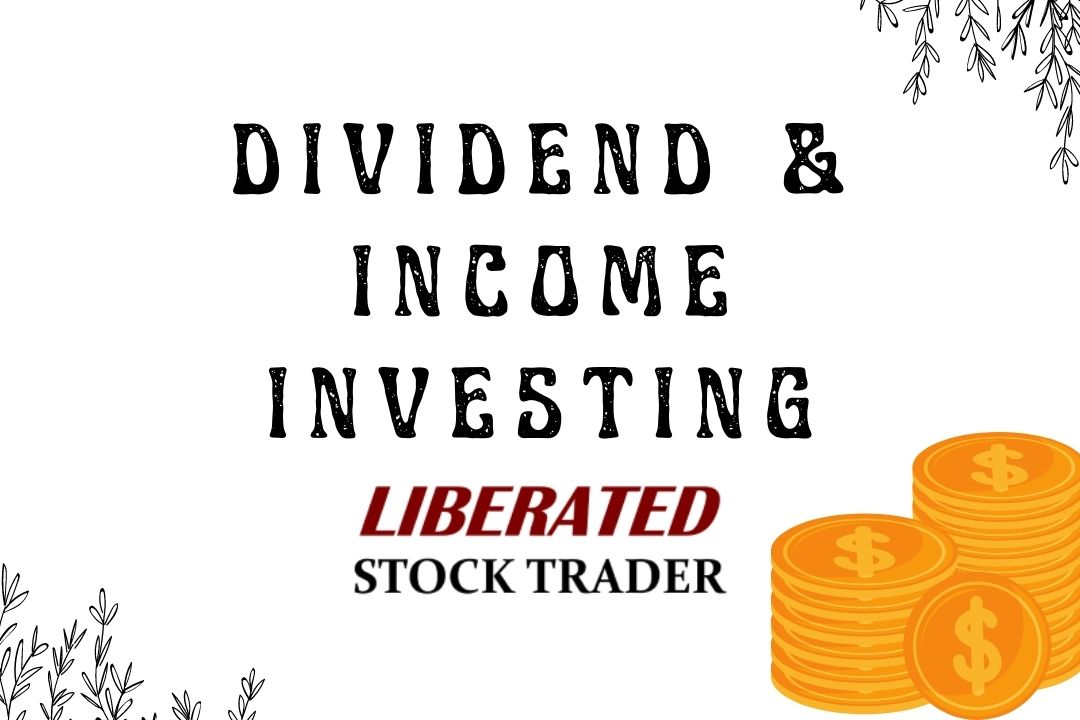Learning how to invest in dividend stocks can seem daunting at first, so we sought advice from four experts: a finance professor, a trader, an investor, and a financial advisor.

Expert: Professor Alexander S. Lowry – Master of Science in Financial Analysis at Gordon College
All dividend stocks share one big similarity: their ability to produce earnings. Pay attention to the history and safety of these companies’ dividend payments and the potential for these payments to grow, and increasing wealth follows from there.
Regarding dividend stocks, the most important numbers to consider are the market cap—or the value of a company’s outstanding shares—and valuation metrics like the price-to-earnings ratio, price-to-book ratio, and price-to-cash flow ratio. I prefer larger companies with lower metrics relative to the markets.
Stocks provide income in the form of a dividend. Remember, you own a share of the business. If the business makes enough money, it can reward shareholders with dividends.
Of course, many stocks don’t pay dividends. Instead, they keep the earnings and reinvest them in the bureinvestWhen searching for income in dividend stocks, consider how safe the dividend payment is. Big blue-chip stocks rarely reduce their dividends, but when they do, it’s seen as a sign of weakness, and the share price often tumbles.
To avoid getting caught with a dividend cutter, look at the dividend payout ratio – the percentage of earnings a stock pays out in dividends. As a rule of thumb, I like to see companies in this category maintain a payout ratio of less than 50%. That offers enough breathing room for the company to survive an economic downturn or a slump in sales without reducing its dividend payment.
Like any income investment, the yield on a stock is calculated as the yearly income (dividend in this case) divided by the current share price. So, a stock that trades for $25 and pays $1 in annual dividends offers a 4% yield.
Biography: Professor Alexander S. Lowry – Master of Science in Financial Analysis at Gordon College
I’m a professor of finance as well as an Advisor and Board of Directors Member for fintech and financial services companies. This means I’m transforming, accelerating, and advising businesses that students I’m educating want to work for. As a CEO advisor, I mentor CEOs and Boards who want to turn strategy into action—currently working with 20+ early-stage and middle-market businesses.
- Gordon College: http://www.gordon.edu/gradfinance
- LinkedIn: https://www.linkedin.com/in/alexanderlowry
- Twitter: https://twitter.com/AlexanderSLowry
Expert: Mike Scanlin – Covered Call Trader & CEO BornToSell.com
My best tip is to write in-the-money (ITM) covered calls on large-cap, blue-chip stocks with an ex-dividend date before the option expiration date. That way, you get the dividend plus the option premium, and since it’s ITM, you have a high probability of being called away (so you can calculate your total return before you even place the trade).
You may be called away the day before the ex-dividend date (early exercise), but since you wrote an ITM option and were hoping for an assignment at the end anyway, the only thing you lose is the dividend. Which may or may not be a big deal, depending on (1) whether the ex-dividend date is near the option expiration date and (2) whether the dividend size was a large percentage of the total return you expected. If the stock is called away early, you may not mind much because you will have collected all the option premium parts of the return sooner than expected.
Here’s an example: FAST is at 50.72 right now. It has a 37-cent dividend with an ex-dividend date of Apr 24. You can sell a 50-strike call option that expires May 18 (about a month from now) for $1.50. So, let’s say you buy 100 shares for $5072 and then sell the call for $150. Your break-even point so far is a stock price of 49.22 on expiration day (not including the dividend).
Now, on Apr 23 (the day before the ex-dividend), the option holder has to decide if he wants to do early exercise (so that he can capture the dividend). His decision will be based on how much time premium remains in the call option because he forfeits all remaining time premium when he exercises. If he exercises, then you will be paid $50 per share for your stock but not get the dividend.
If he doesn’t exercise before the ex-dividend date, you will receive a dividend of 37 cents, which lowers your break-even point from 49.22 to 48.85. On expiration day, if the stock is above $50, your option will be assigned, and you will receive $50/share.
In the first scenario (early exercise), you make $78 profit (5000 for assignment minus 4922 net debits), which is 1.58% in a month (19% annualized).
In the second scenario (assigned at expiration), you make a $115 profit (because you got the dividend), which is 2.23% in a month (28% annualized).
There is always the risk that the option is not assigned and the stock is below your break-even (48.85) on the expiration day. In that case, you would have an unrealized loss. You can sell another call against the stock in the following month to try and turn it into a profitable trade.
Biography: Mike Scanlin – Covered Call Trader & CEO BornToSell.com
Mike Scanlin has been trading covered calls for 37 years and has been CEO of Born To Sell (https://www.borntosell.com) since 2009.
He is an active investor, and most of his money is invested in covered calls. He is a frequent writer and speaker on the subject of covered calls.
- Twitter: https://twitter.com/borntosell
Expert: Barry D. Moore CFTe – Founder LiberatedStockTrader.com
Most people understand the basics of dividend investing. But I suggest that when setting up your dividend investing strategy, look at two things that are rarely mentioned.
Firstly, understand how to use preferred stocks for Dividends.
For an Income Investor, you are looking for an investment that presents a better profit than treasury, corporate bonds, or a current account/money market account. However, you also want investment security similar to a treasury or corporate bond.
Also, because preferred stock must accrue dividends if unpaid and legally be paid out before the regular stockholders get their dividends, you are higher up the pecking order and have an increased security element.
You must understand that Preferred Stock Prices are also more stable as they fluctuate around par value.
But beware that preferred stock is not necessarily a good option when inflation is high or if you are also seeking to profit from long-term increases in stock price.
Secondly, consider taking advantage of a Dividend Reinvestment Plan (DRIP).
If you are seriously committed to a single company for your investment, believe the future is great for them, and want to use their success to help build your wealth, you could consider dividend reinvestment plans.
You can reinvest the dividend instead of receiving a quarterly dividend payment from the company. This means that the dividend payment you would receive will be used to buy more shares in that company.
Another benefit of some DRIPs is that they will enable you to buy shares at a discounted rate. They can vary widely. I have seen some plans offering up to an 8% discount. And did I mention Zero Brokerage Fees?
Biography: Barry D. Moore CFTe
Barry is an IFTA Certified Market Analyst with 20 years of investing experience, Author & Investment Blogger. Previous lives include holding key executive roles in Strategic IT & Business Model Development for Silicon Valley Global Corporations.
- Twitter: https://twitter.com/libstocktrader
- LinkedIn: https://www.linkedin.com/in/barrydmoore/
Expert: John C. Brandy – Financial Consultant – OM Generations
First, I believe in Multiple Sources of Income (MSI), which could include this approach as one of the sources. With this source focused on traditional investments, dividend payers are attractive because they effectively pay you to play.
However, a balance must be struck regarding what is reasonable, as companies have been known to pay unsustainably high dividends to attract attention from investors who would not ordinarily consider the investment.
The keyword there is unsustainable. If a company has a pent-up debt of old dividends payable, that might make an obstacle too high to overcome.
I do both regular and preferred stock. High-quality preferred stock can substitute for municipal bonds when the latter offer unacceptably low interest rates, like now. The right thing depends on the customer, but both have their place.
My favorite tip for other investors is to keep at it no matter what’s happening, shoot down all objections, and do it again.
Biography: John C Brandy – Independent Financial Consultant
John C. Brandy is a financial consultant who runs his service after a dozen years at a regional brokerage and a local wealth management firm. He is a Certified Financial Educator (CFEd®) and knows he can teach you to succeed financially without the high cost.


